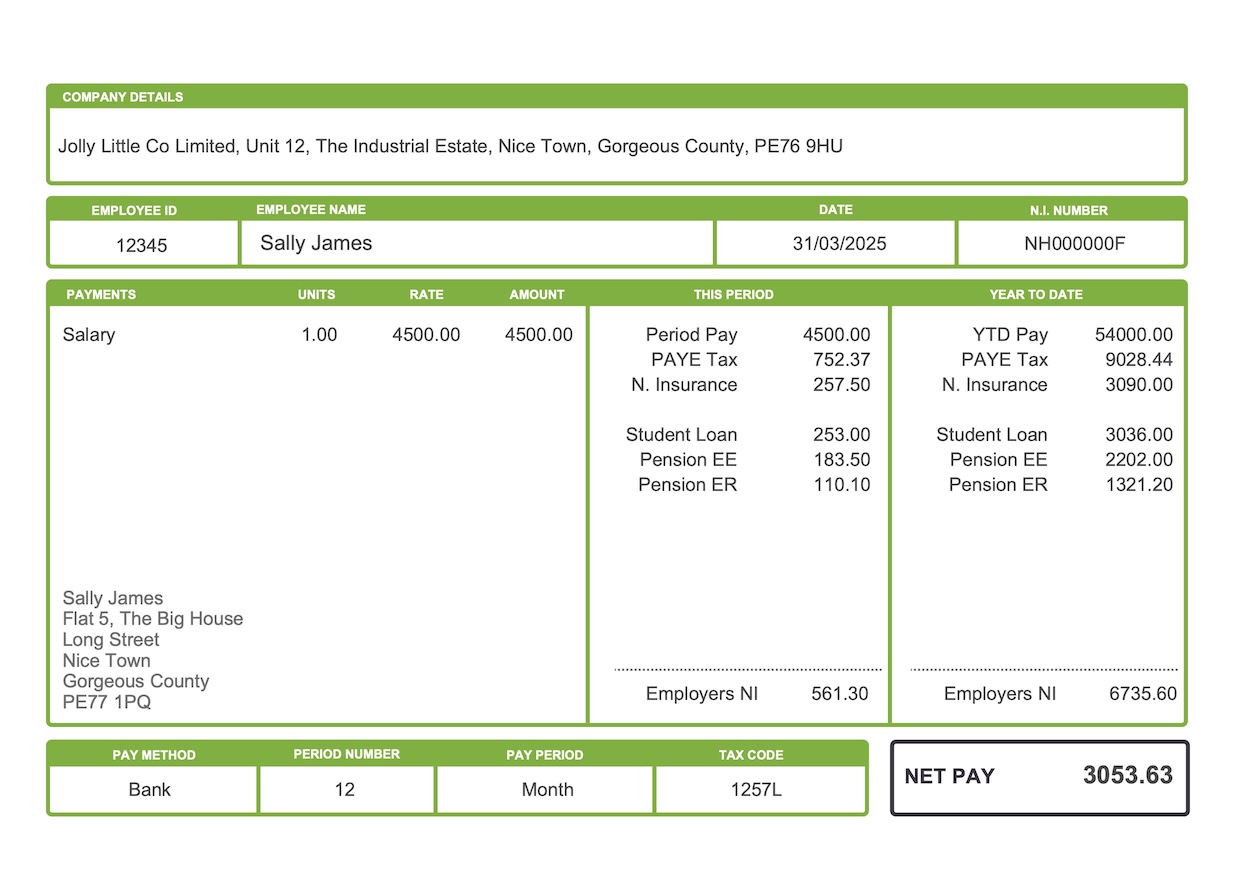
When you open your payslip, the deductions can sometimes feel like a mystery. Between tax, National Insurance, and other codes, it’s easy to lose track of what’s really going where. This guide breaks down the main deductions on your UK payslip — and what each one means.
Your Income Tax is the amount you pay to HMRC based on your earnings.
Most UK employees pay tax through the PAYE (Pay As You Earn) system.
Your employer calculates and deducts this automatically each payday, using your tax code from HMRC.
Typical tax bands for 2024/25:
👉 Always check your tax code matches your situation. An incorrect code can lead to over- or under-paying tax.
National Insurance contributions (NICs) go toward benefits like State Pension, maternity pay, and sick pay.
For employees, contributions are usually listed as “EE NIC” or “Employee NIC”.
Employers also pay a separate contribution (not shown on your payslip).
The amount you pay depends on your earnings band — roughly 12% on income above £1,048/month, tapering off at higher levels.
If you went to university, your payslip may show Student Loan deductions.
These begin once you earn above a certain threshold:
Repayments are taken automatically at 9% of income over your threshold.
Many employers now offer auto-enrolment into a workplace pension.
Your contribution will appear as something like “EE Pension” or “Employee Pension”.
Typical contribution rates:
💡 Always review your pension deductions — opting out means you could miss valuable employer contributions.
You might also see:
If anything looks unfamiliar, check with HR or payroll before payday.
Even small payroll errors can affect your tax record.
Make sure every month that:
👉 If something’s off, contact payroll early — it’s much easier to fix before the next run.
OSCP Online Store / OS Payroll
Newgate St, Morpeth, Northumberland
NE61 7ST